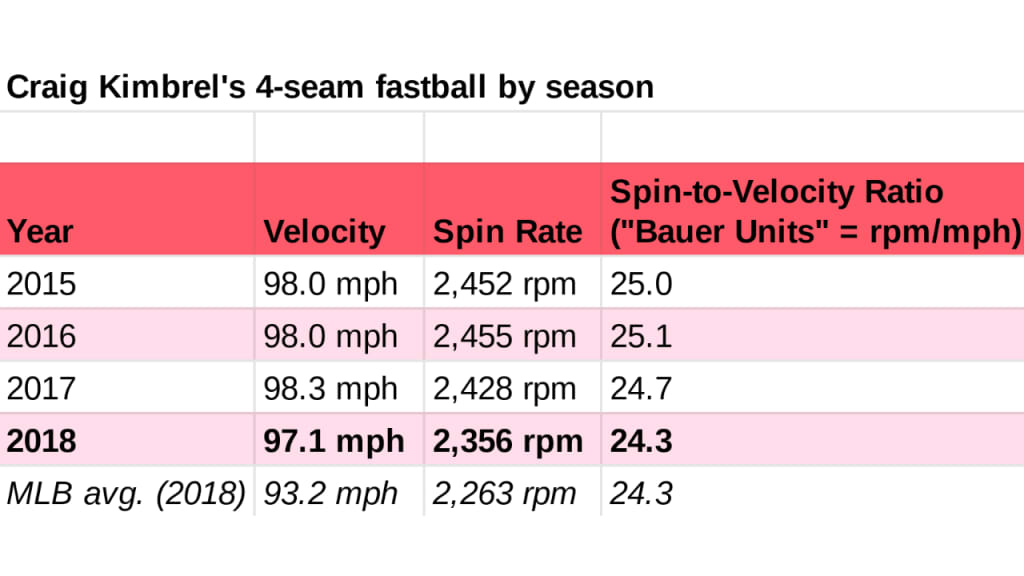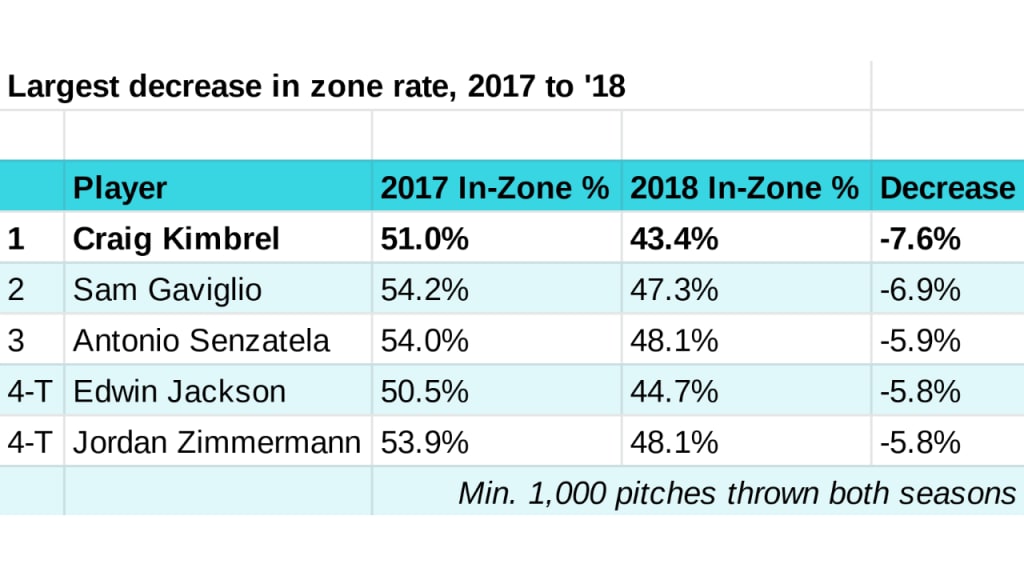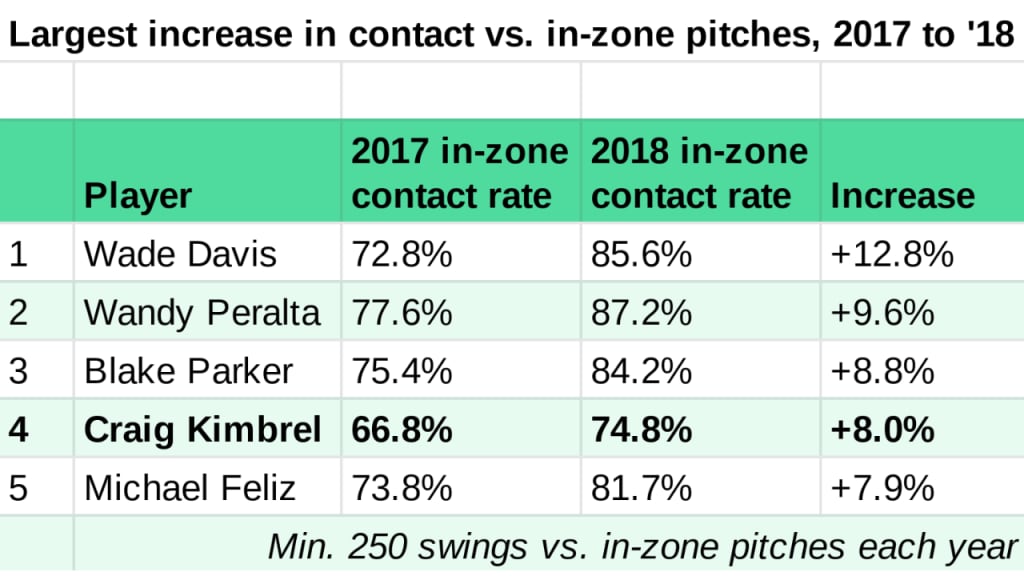It seems crazy that Craig Kimbrel could still be unsigned this deep into the offseason, even if his asking price has reportedly been steep.
The 30-year-old right-hander has been one of MLB's most dominant, consistent closers this decade -- maybe ever. He's averaged 42 saves a year over his eight full seasons, and struck out 41.6 percent of the batters he's faced. And since Kimbrel is a reliever, he'd theoretically have a spot on any contender, as every team can always use more bullpen depth.
The flip side, of course, could be his aforementioned asking price. The market for relievers seemingly peaked following the 2016 season, when Aroldis Chapman, Kenley Jansen, and Mark Melancon all signed deals in excess of $60 million. While Chapman has performed about as well as expected, Jansen has battled some health issues, and Melancon has been a big disappointment.
Last offseason, the biggest reliever deal was given to Wade Davis (three years, $52 million). His first year in Colorado was a disappointment (4.13 ERA, 3.65 FIP), and the overall success rate of those contracts is likely giving teams pause as they evaluate Kimbrel -- not to mention the fact that teams don't get to buy his past few seasons, they are bidding on his next few seasons.
So what could teams be seeing that's making them hesitant to give Kimbrel the deal he wants? Let's investigate.
Kimbrel's velocity (and spin) dipped in 2018
Kimbrel's fastball was still in the upper-90s last season, one of the Majors' faster heaters. But he also lost more than a mile per hour. After averaging 98-plus mph for three straight years, including 98.3 mph in 2017, Kimbrel's average four-seam velocity dipped to 97.1 mph in '18, a 1.2 mph drop.
Along with the velocity, Kimbrel's fastball spin was also lower in 2018 compared to the first three seasons of Statcast tracking. He averaged 2,356 rpm last season, down from 2,428 rpm in '17, 2,455 rpm in '16 and 2,452 rpm in '15.
In one sense, that's normal, as an individual pitcher's spin tends to increase with his velocity. But Kimbrel's spin rate has also decreased relative to his velocity, which you can see by looking at the ratio between the two numbers -- his rpm divided by his mph (coined as "Bauer Units" over at Driveline Baseball).

Why would that matter? Well, high spin on a four-seamer is what gives it the "rising fastball" effect, as the pitch resists the effects of gravity slightly longer. That helps get swing-and-misses, especially up in the zone, where Kimbrel has increasingly liked to work.
Over the last two seasons, Kimbrel has elevated his four-seamer (thrown it in the upper-third of the strike zone or higher) 60.3 percent of the time. That's the 10th-highest rate among the 164 pitchers who've thrown at least 1,000 four-seamers since 2017. If he's losing some of the spin that gives his fastball its rise, those pitches could be less effective for him.
Kimbrel lost the zone
This might be the bigger problem. Kimbrel threw a lot fewer strikes last season.
In 2017, 51.0 percent of Kimbrel's pitches were in the strike zone, which put him in the top quarter of the league in terms of attacking the zone. He had the overpowering stuff to make it work: Hitters only made contact on 66.8 percent of their swings against Kimbrel's pitches inside the zone, the second-lowest in-zone contact rate in baseball.
But in 2018, Kimbrel's in-zone rate dropped all the way down to 43.4 percent -- ninth-lowest of 267 pitchers who threw at least 1,000 total pitches last year. That's a huge decrease: 7.6 percent, the largest decrease in zone rate among the 172 pitchers who threw at least 1,000 pitches in both '17 and '18.

Kimbrel's lack of strike-throwing might also have made it easier for hitters to zero in when he did come into the zone. Hitters swung more when Kimbrel threw a strike in 2018 (especially when he threw pitches middle-middle), and made more contact when they did.
Last season, hitters made contact on 74.8 percent of their swings against Kimbrel's pitches inside the zone, compared to 66.8 percent in 2017. That 8 percent increase in contact rate was the fourth-largest among 248 pitchers who generated at least 250 swings on pitches in the strike zone in both '17 and '18.

This is the second time in three seasons that Kimbrel's had control issues. His 12.6 percent walk rate in 2018 looked a lot like the 13.6 percent mark he posted in '16, when he had the worst statistical season of his career. If teams are worried about Kimbrel's control becoming an ongoing problem, especially after a wild postseason in which his walk rate spiked to 16 percent, that could be hurting his market. Additionally, he posted a 3.13 FIP, which is the highest of his career, and that figure ranked 46th among qualified relievers.
Of course, it's all a balance. Kimbrel's swing-and-miss and strikeout numbers are still elite, and he gets hitters to chase a lot. His expected metrics -- based on walks, strikeouts and quality of contact allowed -- continue to rank highly. But there have been dips in a few key areas. It just depends on how much weight teams are putting on them.
